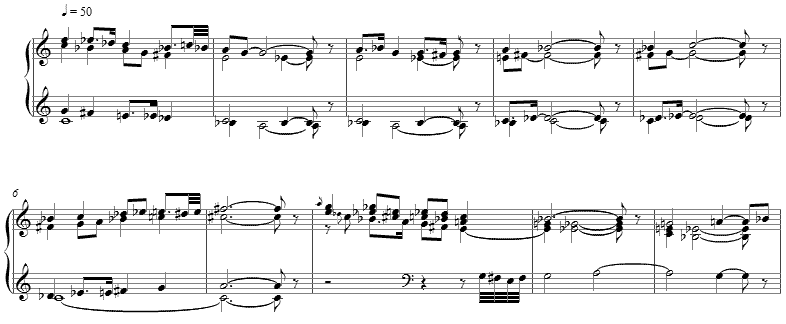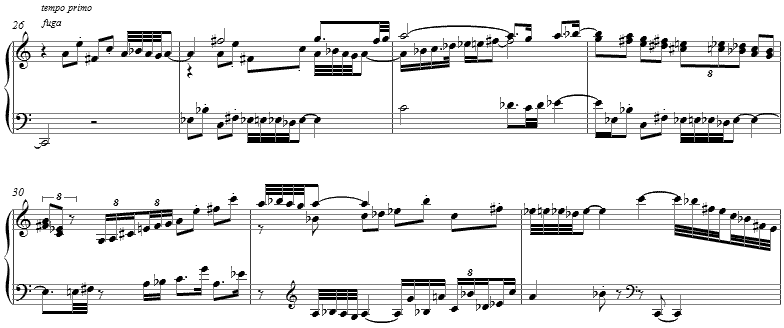Music and Texts of GARY BACHLUND
Vocal Music | Piano | Organ | Chamber Music | Orchestral | Articles and Commentary | Poems and Stories | Miscellany | FAQs
Prelude and Fugue in C octatonic - (2008)
for organ
Alongside other preludes and fugues for a single keyboard and single stop, as inspired by sound samples from Jiri Zurek's Virtual Pipe Organ Project the Czech Republic, named Sonus Paradisi, this small work enjoys another facet of the simple speech and sweet sonority of the Gedeckt stop -- also known as Kryt and Copula. More information on this and about the Czech organ projects can be found on the web page for Prelude and Fugue in D major.
This particular stop has been recorded from the church at Zlata Koruna; this prelude and fugue are yet another work as a keyboard piece without pedal. This prelude follows the alternating whole and half steps of the octatonic scale -- an eight note scale [ 1 ] -- and is a four voiced, close-harmony meditation with long descending and ascending arches across several phrases. An interpretive, rubato manner of performance is certainly recommended.
The fugue subject is in the same meter and employs the same octatonic scale, such that the opening leap of the fifth is answered by the corresponding tritone and a notated decorative turn thereafter. The answer comes at the relationship of the tritone, yet as the subject begins on the interval of the major sixth above the tonic, the answer begins at its corresponding, scalar sixth of the dominant, though in the octatonic scale this is a minor interval.
Jiri Zurek at the console, Basilique Sainte-Marie-Madeleine
The entire work is here,
, an MP3 file [ 3.5 MB, 3' 40" ]
The score for Prelude and Fugue in C octatonic is available as a free PDF download, though any major commercial performance or recording of the work is prohibited without prior arrangement with the composer. Click on the graphic below for this organ score.
Prelude and Fugue in C octatonic
NOTES
[ 1 ] The eight note scale termed "octatonic" is made up of alternating whole and half steps, such that two variations are possible, unlike the more varied modes. The first variation begins with a whole step and the second with a half step. They are as follow:
For this particular Prelude and Fugue in C octatonic, I have used the first of the two, as shown above. While there are a number of implications to this scale in contrapuntal writing, the simple fact is that the unrelieved regularity of the two scales -- quite like the even more restrictive normal pentatonic scale -- predicts many more constraints that the major-minor system alone, not to mention the other various modes and scales from the history of church and synagogue music to ethnic modes of various kinds.


